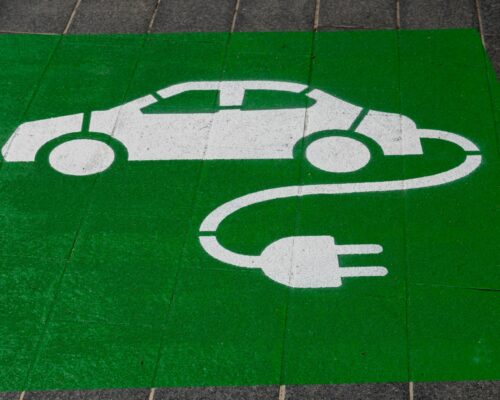Sustainable Flying – Can Air Travel Be Carbon Neutral?
16 August 2022 – by Dhra Dhirakaosal-Naglis Comments (0)
As COVID-19 travel restrictions have eased worldwide, air travel has ramped up, with many resuming their business and holiday travels. The aviation industry suffered severely during the pandemic. But, one positive triumph that rose from the ashes was the temporary decrease in the sector’s carbon dioxide emissions. Environmentally conscious passengers are now left to wonder whether it’s possible to reduce their personal carbon footprints while enjoying sustainable flying.
How Do Airplanes Affect the Environment?
Aviation accounts for 2.4% of global carbon emissions. This may seem small. But, if the world’s aviation industry were a country, it would rank 6th in global carbon emissions standings. The figure excludes additional aviation emissions that have warming effects.
Green Aviation and Sustainable Flying – No Small Feat
Decarbonising the aviation sector and sustainable air travel will be a daunting challenge. Some experts believe it may be the last sector to go net-zero carbon, as it is one of the most difficult to address. A 300-tonne plane that needs to move at 805 km/h in the sky requires enormous energy or jet fuel. This issue makes sustainable flying a tough goal to achieve. Eliminating the use of fossil fuels and using alternative fuels is not entirely possible yet, since plane engines are traditionally designed for petroleum-based fuels. Yet, the sustainable airline is a dream and sustainable aviation a hope.
Green Flying Will Cost Money
Sustainable aviation fuels (SAFs), also defined as renewable or waste-derived, could make flying greener, but it won’t be cheap. It would take about USD 2 trillion to make the aviation industry sustainable. That’s why it will not be easy to make green flying or green air travel possible.
Reducing Aviation’s Carbon Footprint and Carbon Emissions
Yet, hope is on the horizon. The airline industry has adopted a net-zero carbon emissions by 2050 goal in line with the Paris Agreement to fight the climate crisis and limit global warming to 1.5°C. Several members of the industry released net-zero road maps detailing solutions such as sustainable aviation fuels (SAFs), aircraft technological improvements and government measures. Over 20 countries also signed the International Aviation Climate Ambition Coalition at COP26 to make progress toward sustainable flying. The UN’s specialised civil aviation agency will hold talks this year to set its own climate goal.
Carbon-Neutral Airlines and Sustainable Aviation Fuels – A Hope For Our Skies
Theoretically, SAFs have the potential to cut flight emissions drastically. However, this depends on how they are derived. But, they are not widely available yet. In 2019, SAFs accounted for just 0.1% of total aviation fuels.
Carbon offsetting is also considered a potential solution, with credits generated through investments in clean energy projects. Yet, it’s uncertain if offsets will be effective due to the lack of transparency and international standardisation.
United Airlines has become the first airline to bet on carbon capture technology. It announced that it would go “100% green” by 2050. The airline invested multimillion dollars in a new direct-air-capture facility in Texas called 1PointFive. It is a joint venture between Occidental Petroleum and a private equity firm. The efforts are similar to those of Climeworks, a CO2 removal company with a plant in Iceland that can currently remove 4,000 tons of CO2 per year.
It’s unclear when United Airlines will start reducing GHG emissions. It is also not paying to put carbon into underground storage. But, it is investing in an oil company that could make carbon-capture technology cost less. However, it means that planes will still continue to use fossil fuels.

Airlines with Net-Zero Targets
Meanwhile, Qantas – the second airline in the world to adopt a net-zero target by 2050 – says synthetic fuels could replace fossil fuels and biofuels by mid-2030. Companies can make SAFs by using “power-to-liquid” technology – or synthesised liquid hydrocarbon – by combining green hydrogen from renewable power with water and captured carbon. SAFs can power long flights. According to a study by the International Council on Clean Transportation, SAFs have a CO2 reduction emissions potential of between 59 to 62%.
Other green flying solutions discussed by the industry include hydrogen or battery-powered planes. However, these can only power short flights. Synthetic fuel is deemed more sustainable than crop-based biofuel, as the latter competes with food production by taking up agricultural land.
Is Air Travel Avoidable?
Flying less could be an option, as the pandemic has shown us that there are ways to stay connected without air travel. However, it’s understandable that cutting down on air travel may be difficult for some people.
Global GHG emissions for flying are still lower than those of vehicles, but flights can be more carbon-intensive than car rides. As economies worldwide begin to recover and grow richer, experts anticipate aviation will triple its CO2 emissions by 2050.
The Future of Sustainable Air Travel
Stark challenges remain for the global aviation industry to lower global emissions in the long term. But, with concerted efforts from the entire industry – aircraft manufacturers, airports, airlines, air navigation service providers such as International Air Transport Association and international civil aviation organization and economic incentives like government support and new technologies – eco-minded travellers will likely be able to fly with a clean conscience sustainably.




